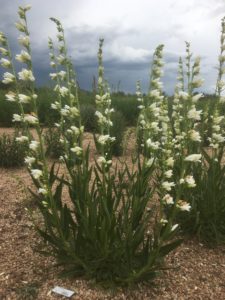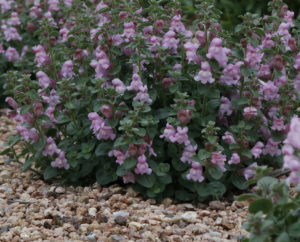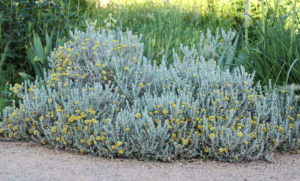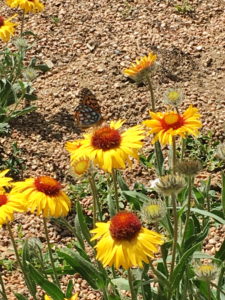
Colorado State University
Plant Select® is the country’s leading source of plants designed to thrive in the high plains and intermountain region. It is a nonprofit collaboration of Colorado State University, Denver Botanic Gardens and horticulturists around the world. During 2021, our 24th anniversary, we are excited to introduce four new plants.
 Penstemon strictus ‘WWG06’ (Blanca Peak™ Rocky Mountain Beard Tongue)
Penstemon strictus ‘WWG06’ (Blanca Peak™ Rocky Mountain Beard Tongue)
Blanca Peak™ Rocky Mountain Beard Tongue is a showy white-flowered selection of the normally lavender-blue flowered species. In late spring, it provides three to four week-long eye-catching displays of tubuar flowers. The evergreen foliage is light green and forms a low-growing mat of long, ½-inch wide leaves. It is a long-lived Penstemon species that is easy to grow in most soils as long as it doesn’t stay wet or get too much irrigation. The original plant was discovered in a Santa Fe, N.M. garden and is propagated from cuttings, not seed. The species is native to the higher elevations of Arizona, Colorado, New Mexico, Utah, and Wyoming, and is an excellent perennial for intermountain xeriscape. It grows to about 20 to 24 inches tall and 15 to 18 inches wide. It is hardy to USDA Hardiness Zones 4a to 8. It is deer resistant and a good pollinator plant.
 Antirrhinu sempervirens ‘Drew’s Folly’ (Drew’s Folly hardy snapdragon)
Antirrhinu sempervirens ‘Drew’s Folly’ (Drew’s Folly hardy snapdragon)
Antirrhinum sempervirens ‘Drew’s Folly’ develops into a small mound. The soft, slightly fuzzy foliage is a solid dark green and the flowers are a dusty pink. This hardy perennial flowers so heavily that when in full bloom the foliage is completely masked. It matures to about 12 inches tall and approximately 16 inches round. The plant will thrive in a wide range of soil types and can grow in relatively dry conditions. The species come from mountainous regions on the borders of France and Spain, and may need occasional irrigation to keep cool in the hottest part of the summer. It will thrive in full sun or partial shade. It is hardy to USDA Hardiness Zone 5. It is a good pollinator plant so honey bees and little bumblebees work this plant for pollen and nectar.
 Helichrysum trilineatum SteppeSuns® Hokubetsi (SteppeSuns® Hokubetsi)
Helichrysum trilineatum SteppeSuns® Hokubetsi (SteppeSuns® Hokubetsi)
Hokubetsi is the native Basothi name for Helichrysum trilineatum. SteppeSuns® is a selection that forms a dense, rounded silver shrub with clusters of bright yellow strawflowers at the terminals of branches that will bring an ever-silver statement to the dry garden. Fuzzy stems and foliage protect this plant from intense solar radiation and insulate it through the bitterly cold winters. Hokubetsi is versatile and adaptable, tolerating extremes in temperature, water and soil types. It blooms in mid-summer with yellow flowers, followed by a second flush of vegetative growth. During winter, small silver leaves curl up or fall off, leaving an ever-silver statement in the garden. It is hardy to USDA Hardiness Zone 5 and can attract some pollinators. Prune annually to shape and keep compact.
 Gaillardi aristata ‘Training Wheels’ (Training Wheels blanket flower)
Gaillardi aristata ‘Training Wheels’ (Training Wheels blanket flower)
Training Wheels blanket flower will eventually form a sizeable loose colony that can be up to 4 feet wide. Flowers stand erect at 18 inches tall and bloom throughout the heat of the summer into fall. It is native to the Wet Mountain Valley in Custer County in south-central Colorado, with a wide distribution. Grow Gaillardia aristata ‘Training Wheels’ in a garden filled with native grasses and beard tongues and it will attract all sorts of native pollinators including bees, butterflies and moths. It prefers full sun and clay to loam soil types with low water. It is hardy to USDA Hardiness Zone 4.










